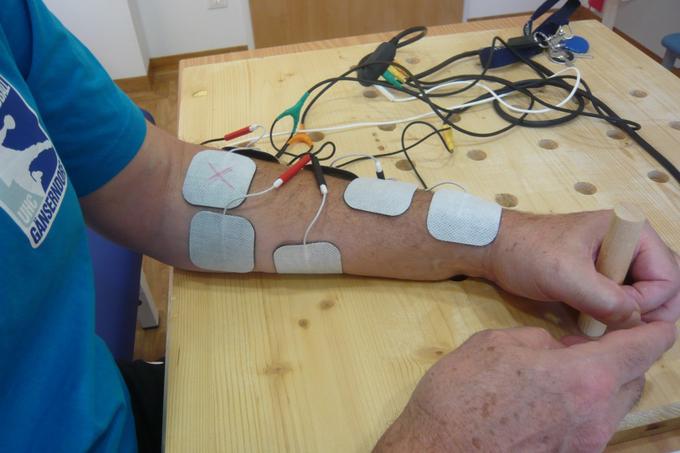
Global Functional Electrical Stimulation (FES) Market Set to Reach USD 958.3 Million by 2035, Driven by AI Integration and Rise in Neurological Disorders | FMI
 Functional Electrical Stimulation (FES) Market
Functional Electrical Stimulation (FES) Market
The global functional electrical stimulation market is poised for substantial growth, projected to rise from USD 672.8 million in 2025 to USD 958.3 million by 2035, registering a CAGR of 3.6% over the forecast period. This growth is propelled by expanding neurorehabilitation programs, increased investments in wearable FES technologies, and rising demand for home-based and remote rehabilitation solutions.
As healthcare systems across the globe continue to tackle the rising burden of neurological conditions such as spinal cord injury (SCI), stroke, multiple sclerosis (MS), and cerebral palsy, the need for effective rehabilitation approaches is becoming paramount. Functional Electrical Stimulation has emerged as a transformative solution—using controlled electrical impulses to stimulate muscles, restore movement, and improve quality of life.
Stay Updated with Market Movements: Get Your Sample Report! https://www.futuremarketinsights.com/report-sample#5245502d47422d3134323137
Technological Innovation Fueling FES Market Evolution
The landscape of the FES market is being reshaped by technological advancements, especially wireless stimulators, AI-integrated protocols, and wearable neuromodulation systems. Devices now incorporate brain-computer interface (BCI) technology and machine learning algorithms, allowing clinicians to tailor treatment regimens to individual patients for more precise and effective outcomes.
Innovations such as closed-loop FES systems, miniaturized implants, and robotic-assisted gait training are further improving therapeutic benefits and broadening accessibility. The integration of virtual reality (VR) into FES programs is also revolutionizing patient engagement and rehabilitation success.
Government Support & Reimbursement Policies Accelerate Market Adoption
The growth trajectory of the FES market is being reinforced by government-backed funding initiatives, expanded rehabilitation insurance coverage, and a collaborative effort between medical device manufacturers and research institutions. Continuous clinical trials and regulatory support are laying the groundwork for the broader acceptance of FES as a mainstream treatment modality.
Key Takeaways by Region
United States
The U.S. FES market is expanding steadily, backed by rising cases of neuromuscular disorders and spinal cord injuries. Regulatory bodies like the FDA and professional organizations such as the APTA play a crucial role in standardizing device safety and efficacy. Wearable and AI-driven devices are gaining traction, while insurance expansion for rehabilitation services and the popularity of home-based recovery options are increasing patient access.
CAGR (2025–2035): 3.8%
United Kingdom
In the UK, growth is driven by the increasing prevalence of stroke-related impairments and investment in smart neuro-rehabilitation technologies. The NHS and MHRA ensure affordability and safety for patients using FES. Integration with exoskeleton systems is helping improve mobility outcomes.
CAGR (2025–2035): 3.3%
European Union
The EU market benefits from stringent regulatory frameworks and robust research funding in neuroprosthetics and brain-machine interface technologies. Countries like Germany, France, and Italy are leading adopters, with significant progress in closed-loop stimulation systems and the incorporation of VR in therapy settings.
CAGR (2025–2035): 3.6%
Japan
Japan’s rapidly aging population has heightened the demand for robotic rehabilitation and compact FES implants. Government support via the Ministry of Health, Labour, and Welfare (MHLW) is accelerating adoption. Technologies that combine FES with robotic gait training and tele-rehabilitation are expanding access.
CAGR (2025–2035): 3.7%
South Korea
South Korea is emerging as a key player with the highest regional CAGR. Backed by government funding, increased spinal cord injury cases, and growing interest in digital healthcare, the market is embracing wearable FES and AI-powered home rehab solutions. The Ministry of Food and Drug Safety (MFDS) ensures product compliance and global competitiveness.
CAGR (2025–2035): 3.9%
Soaring Demand for Market Information: Uncover Detailed Trends and Insights in Our Report! https://www.futuremarketinsights.com/reports/functional-electrical-stimulation-market
Competitive Outlook
The global FES market remains dynamic, with major players investing in wearable stimulation technology, AI-enhanced therapy devices, and patient-personalized neuromodulation platforms. The focus is shifting towards non-invasive solutions that promote long-term recovery and restore mobility effectively.
Companies are increasingly pursuing wireless connectivity, cloud-enabled data analytics, and BCI-powered feedback systems to provide clinicians with real-time patient data and adaptive stimulation protocols. These advances support more responsive and efficient treatments, especially in remote and at-home rehabilitation settings.
Leading Companies in the FES Market:
- HASOMED GmbH
- Bioness Inc.
- Trulife
- Otto Bock
- Odstock Medical Limited
- Hobbs Rehabilitation
- MotoMed
- Restorative Therapies
- Medline Industries
- G.tec Medical Engineering GmbH
Market Segmentation
By Product Type:
- Wired FES Devices
- Wireless FES Devices
By Indication:
- Neurological Disorders (SCI, Stroke, MS, CP)
- Pain Management
- Musculoskeletal Disorders
- Other Indications
By End User:
- Hospitals
- Ambulatory Surgical Centers
- Clinics
By Region:
- North America
- Latin America
- Western Europe
- Eastern Europe
- East Asia
- South Asia Pacific
- Middle East & Africa
Fuel Your Healthcare Business with Actionable Insights! https://www.futuremarketinsights.com/industry-analysis/therapeutic-device
Future Outlook
The next decade will see the Functional Electrical Stimulation market shift from traditional rehabilitation models to technology-enabled, patient-centric care ecosystems. As the global population ages and neurological conditions become more prevalent, FES technology will continue to evolve into a cornerstone of restorative therapy—blending artificial intelligence, robotics, and neuroplasticity research to transform outcomes for millions of patients.
Editor Details
-
Company:
- MARKITWIRED
- Website:
